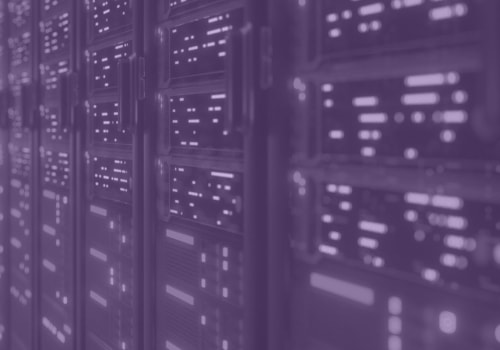Data classification policies are an important part of maintaining data privacy, and understanding how they work is essential for organizations that handle personal data. Data classification policies define how sensitive information should be handled, including who can access it and how it should be used. They are also important for organizations that must adhere to laws and regulations regarding data privacy, such as the HIPAA IT policies and procedures. In this article, we will explain what data classification policies are, why they are important, and what the different levels of data classification mean. We will also discuss how data classification policies fit into the overall framework of data privacy regulations and policies. Data classification policies are essential for businesses and organizations that handle large amounts of data.
They help to protect the privacy of customers and employees, and ensure that data is stored, used, and handled responsibly. In the simplest terms, data classification policies are set of guidelines that define how data is to be treated, managed, and protected. These policies help organizations classify data into different levels of sensitivity and confidentiality, which in turn helps them ensure that appropriate security measures are taken to protect the data. The main purpose of data classification policies is to classify data into different categories based on its sensitivity or confidentiality. This typically involves classifying data into three levels: confidential, sensitive, and public.
Confidential data is information that should only be accessible by authorized personnel, while sensitive data is information that requires a higher level of security. Public data is typically information that can be accessed without any special access or authorization. For example, in the healthcare industry, confidential data includes patient records, financial information, and other sensitive data. Sensitive data includes medical records, drug prescriptions, and other sensitive information. Public data includes general health information like diet plans, exercise routines, and other health-related topics. In the financial industry, confidential data includes customer account details and financial statements.
Sensitive data includes transaction histories and other sensitive information. Public data includes general financial topics such as budgeting tips, credit card advice, and other non-sensitive information. Data classification policies are important for organizations because they help ensure that only authorized personnel can access confidential or sensitive information. Additionally, they help organizations protect their customers' private information from being accessed or shared without their permission. Furthermore, they help organizations comply with various regulations such as the European Union's General Data Protection Regulation (GDPR).When implementing a data classification policy in an organization, it is important to define roles and responsibilities for those who will be managing the policy.
It is also important to provide training on the policy and its implications to those who will be responsible for implementing it. Additionally, organizations should have processes in place to monitor compliance with the policy in order to ensure that it is being followed properly. The potential risks of not having a data classification policy in place include data breaches, financial losses, legal liabilities, reputational damage, and more. Data breaches can result in the unauthorized access of sensitive information or in the loss of confidential data. Financial losses can occur if confidential information is disclosed or if unauthorized access leads to fraudulent activities.
Legal liabilities can arise if an organization fails to comply with applicable laws or regulations. When implementing a data classification policy in an organization, there are a few best practices to keep in mind. First, it is important to ensure that all personnel involved in handling data are aware of the policy and its implications. Additionally, organizations should create processes to monitor compliance with the policy and ensure that it is being followed properly. Finally, organizations should take steps to protect confidential or sensitive information by implementing appropriate security measures such as encryption or access controls. In conclusion, data classification policies are essential for businesses and organizations that handle large amounts of data.
By understanding different types of classifications, providing examples of how they can be used in different contexts, describing how they can be implemented in an organization, discussing potential risks of not having a policy in place, and providing guidance on best practices for implementation, organizations can ensure their data is secure.
What Is Data Classification?
Data classification is the process of organizing data into categories so that it can be properly managed and secured. Data classification policies help businesses and organizations ensure that data is used, stored, and handled responsibly, while also protecting the privacy of customers and employees. Data classification is important because it helps organizations understand the value of their data, identify sensitive data, and set appropriate security controls. Organizations typically use a data classification system to categorize their data according to its sensitivity. For example, some organizations may classify data as public, internal, confidential, or top secret.This type of system helps organizations prioritize which data requires the highest levels of security and protection, as well as which data can be shared with external parties. Additionally, data classification policies can help organizations ensure that they are in compliance with legal and regulatory requirements. Data classification is also important for preventing data breaches. By understanding the value of each type of data and setting appropriate security controls, organizations can reduce their risk of a data breach. Additionally, data classification helps organizations respond quickly and effectively when a breach does occur.
Risks of Not Having a Data Classification Policy
When an organization does not have a data classification policy in place, there are a number of potential risks that could arise.These risks include:Data Loss or BreachWithout a data classification policy, confidential and sensitive data may be exposed to unauthorized individuals or organizations. This could lead to data loss or a data breach, which can have serious consequences for the organization and its customers.
Legal Liability
Organizations that do not implement a data classification policy may be held liable for any data breaches that occur, even if the breach was caused by a third party. This could result in costly legal fees and penalties.Reputational Damage
Data breaches can also cause reputational damage to an organization. Customers may lose trust in the organization, leading to a decrease in sales or customers abandoning the organization altogether.Regulatory Compliance Issues
Organizations that handle personal or sensitive data are subject to various regulations, such as GDPR, HIPAA, and CCPA.Not having a data classification policy in place may result in non-compliance with these regulations.
Types of Data Classifications
Data classification policies are designed to help organizations categorize their data and ensure it is handled appropriately. There are several types of data classifications that can be used, depending on the nature of the data and the needs of the organization.Confidential
Data classified as confidential is sensitive information that should only be accessed by authorized personnel. Examples of confidential data include financial records, customer information, proprietary information, and employee records.PublicPublic data is information that is freely accessible to anyone. This type of data can include company news, public records, and other information that does not contain sensitive or confidential information.
Private
Private data is information that should only be accessed by certain individuals or groups. This type of data could include confidential customer information, internal business records, and other sensitive data.SensitiveSensitive data is information that must be kept secure and protected from unauthorized access. This type of data could include medical records, credit card information, or other personal information.
Archived
Archived data is information that is no longer actively used but should still be stored securely. This type of data could include old customer records, financial documents, or other documents that are no longer in use.Implementing a Data Classification Policy
Data classification policies are an essential part of any organization that handles large amounts of data. Implementing these policies can help ensure that data is handled responsibly and protect the privacy of customers and employees. In order to implement a data classification policy, an organization must first determine what type of data it handles, how it will be classified, and what controls should be put in place. The first step in implementing a data classification policy is to identify the different types of data that the organization handles.This includes both personal data and non-personal data. It is important to understand the difference between the two and how they should be treated differently. Once the types of data have been identified, the organization should then decide how it will classify the data. It should consider factors such as sensitivity, availability, and legal or regulatory requirements.
Based on this classification, the organization can then decide what controls should be put in place to protect the data. Once the classification has been decided upon, the organization should then implement the policy. This includes creating guidelines for data handling, establishing roles and responsibilities for those handling data, and creating procedures for dealing with any violations of the policy. Finally, it is important to regularly review and update the data classification policy as needed.
This will ensure that it remains up-to-date with any changes in technology or regulations. It is also important to ensure that all employees are aware of the policy and understand their responsibilities when handling data.
Best Practices for Data Classification Policies
Data classification policies are critical for businesses and organizations that store and manage large amounts of data. It is important to establish clear protocols for the handling of customer and employee data. This includes determining how the data should be categorized and classified, as well as how it should be stored, used, and handled responsibly.To ensure data security, here are some best practices for data classification policies.
Establish Clear Guidelines and Procedures
The first step in implementing a data classification policy is to establish clear guidelines and procedures. This includes defining the different types of data that are stored, used, and handled within the organization, as well as the security protocols that should be followed when handling sensitive information. It is also important to ensure that all employees understand the importance of following these guidelines and procedures.Categorize Data Based on SensitivityOnce the guidelines and procedures have been established, it is important to categorize the data based on its sensitivity. Data should be divided into categories such as public information, confidential information, and restricted information. This will help ensure that the appropriate level of security is applied to each type of data.
Implement Access Controls
To protect sensitive data, it is important to implement access controls.This includes setting up user accounts and permissions, as well as monitoring user activity to ensure that only authorized personnel have access to restricted data. It is also important to regularly audit access logs and user accounts to ensure that no unauthorized access has taken place.
Train Employees on Data Security Protocols
Finally, it is essential to train employees on data security protocols. This includes teaching them how to properly handle sensitive information, as well as the importance of following security protocols.Training employees on data security protocols is an essential part of any successful data classification policy. Data classification policies are an essential part of any business or organization that handles large amounts of data. They protect the privacy of customers and employees, and ensure that data is stored, used, and handled responsibly. There are various types of data classifications, including public, private, confidential, and sensitive, each with its own rules and regulations. Implementing a data classification policy requires organizations to identify and classify their data accordingly and to develop best practices for handling it.
Not having a data classification policy can put an organization at risk of data breaches or non-compliance with laws and regulations. In conclusion, data classification policies are an essential part of any business or organization that handles large amounts of data. They help to ensure that data is stored, used, and handled responsibly, while also protecting the privacy of customers and employees. For further reading on the topic, organizations can refer to the HIPAA IT policies and procedures as well as other resources on data privacy policies.








Leave Message